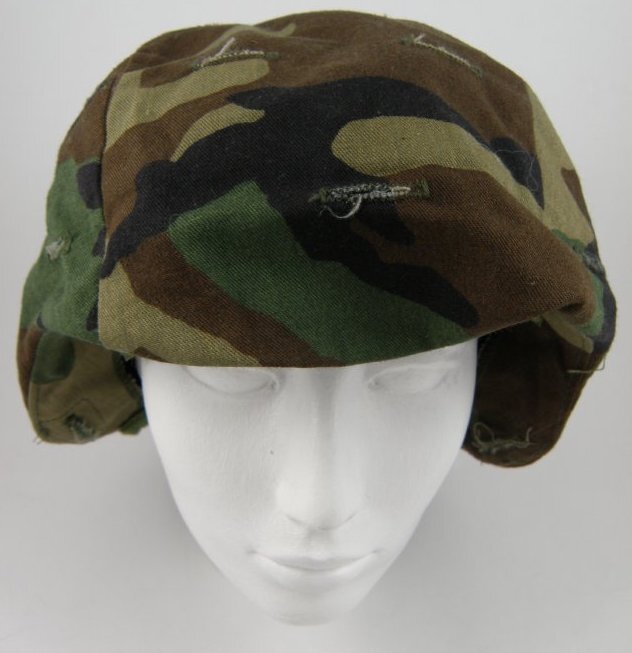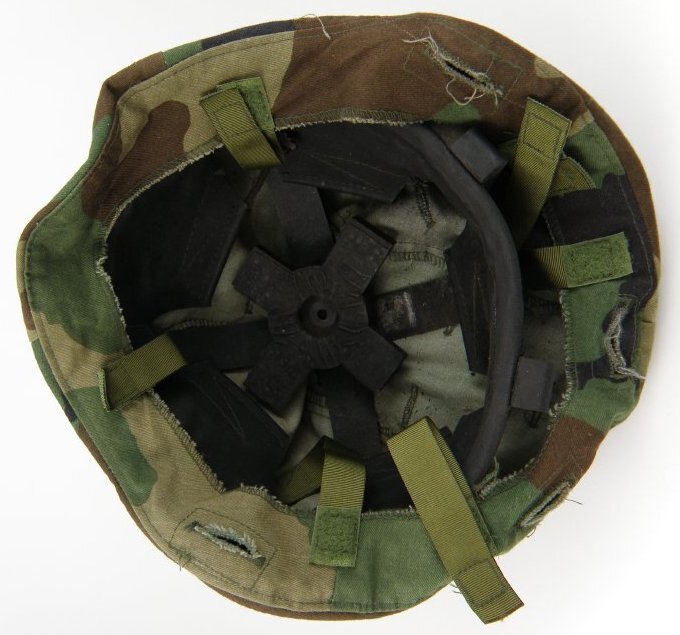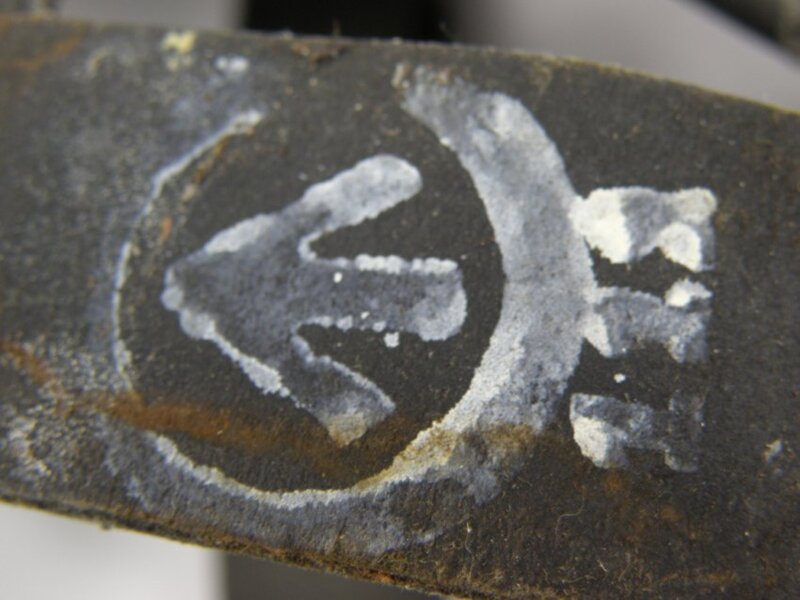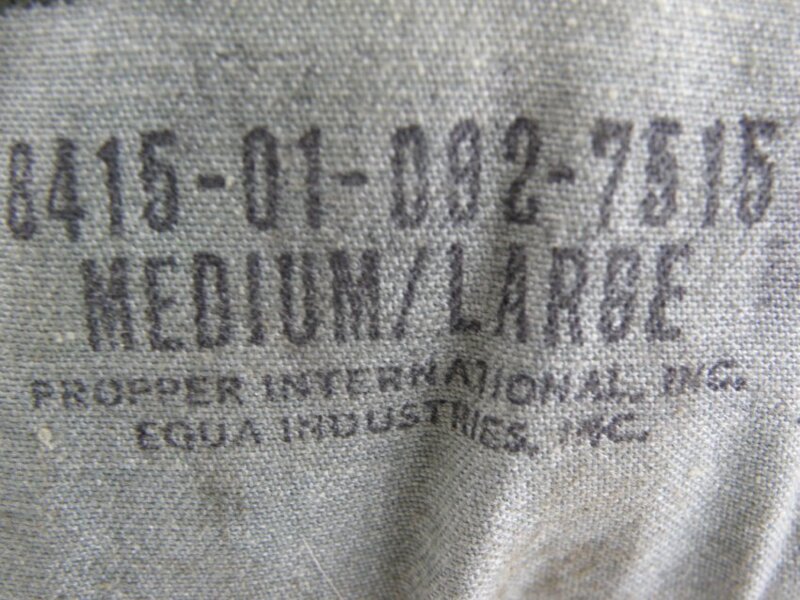Camouflage Helmet Liner
Item
Title
Camouflage Helmet Liner
Description
Ground Troops Parachutists Helmet liner with a woodland camouflage cover. A green cotton camouflage class 1 medium/large sized helmet cover for a liner that has eight black rubber spacers attached to the black oil cloth covered head band. The broad arrow marking is stamped on the inner side of this band next to the camouflaged fabric. The cover is made up of three sections, all with numerous slits to accommodate natural camouflage (twigs with leaves). Six green nylon straps with velcro on each end are attached around the rim of the cover.
Date
Identifier
005.098.003
Provenance
Camouflage Cover After World War II, various styles of camouflage cover were used at different times. In the 1960s through 1970s, the type commonly seen in the United States Army and Marine Corps was a reversible fabric cover called the Mitchell pattern. This type was nearly omnipresent in Vietnam, and where, for the first time, the Army wore the cloth camouflage as general issue; whereas in World War II and the Korean War, the Army traditionally wore their helmets only with nets, or just plain, without anything on it. By contrast, United States Marines have consistently worn a cloth camouflage cover over their M-1 helmets in all three major wars — World War II, Korea, and Vietnam. The Korean War (1950-1953) was largely fought using World War II weapons and equipment, and the Marine Corps helmets and camouflage covers were basically the same as those used during World War II. In Vietnam, the green portion of the reversible fabric camouflage was normally worn outermost. Helmet covers in the (European) woodland camouflage, were designed for fighting in the European Theater of Operations (NATO), and became the post-Vietnam (jungle pattern) camouflage cover used by the U.S. military from the late 1970s onward. The (European) Woodland pattern was not reversible; they were only printed on one side. These covers were all constructed from two semi-circular pieces of cloth stitched together to form a dome-like shape conforming to the helmet's shape. They were secured to the helmet by folding their open ends into the steel pot, and then placing the liner inside, trapping the cloth between the pot and the liner. An olive green elastic band, intended to hold additional camouflage materials, was often worn around the helmet to further hold the cover in place. Other armies used these or similar covers printed with different camouflage patterns, or employed entirely different methods. In the Dutch Army, for example, it was common practice to use a square piece of burlap as a helmet cover on M1 helmets, usually secured by a net (see above) and a wide rubber band. During The Battle of the Bulge and Korean War, soldiers made white helmet covers that were good camouflage in the snowy areas. They were not issued to soldiers, so many soldiers simply made them from a white cloth from a shirt or, more commonly, used those that belonged to the Germans, since this is where the idea originated.








